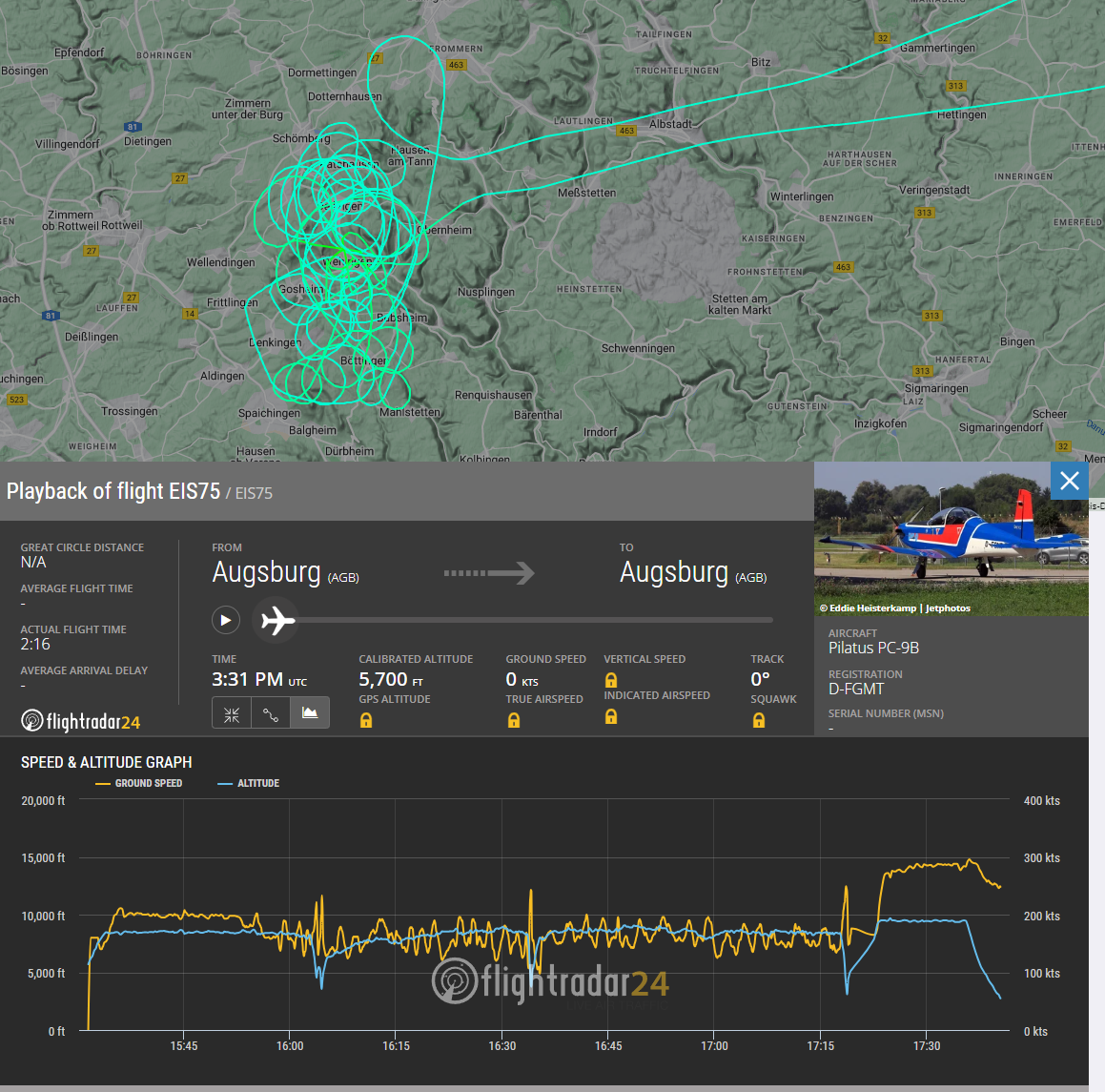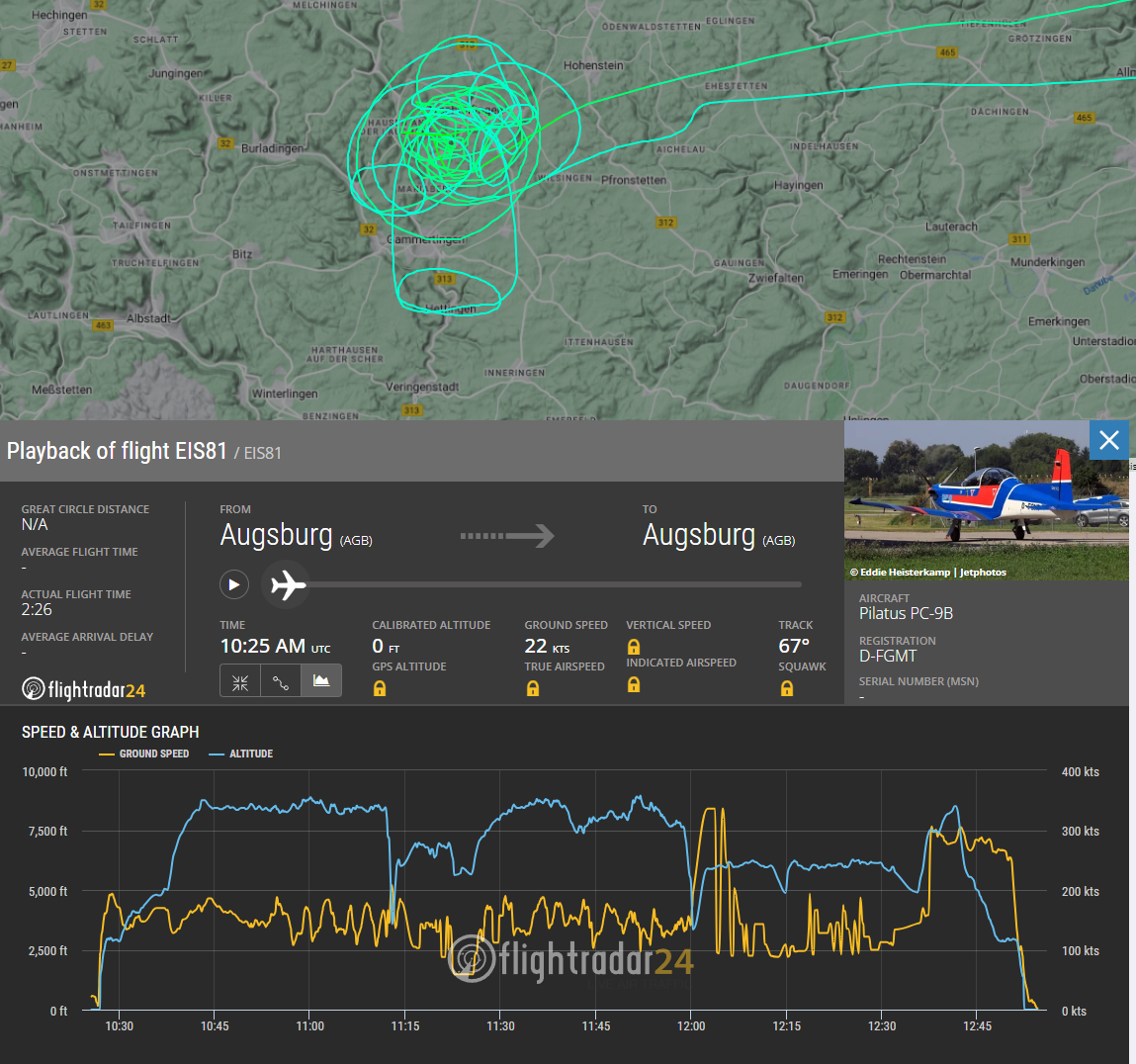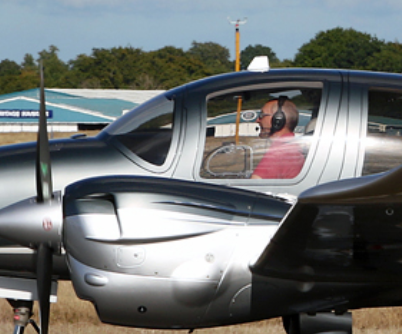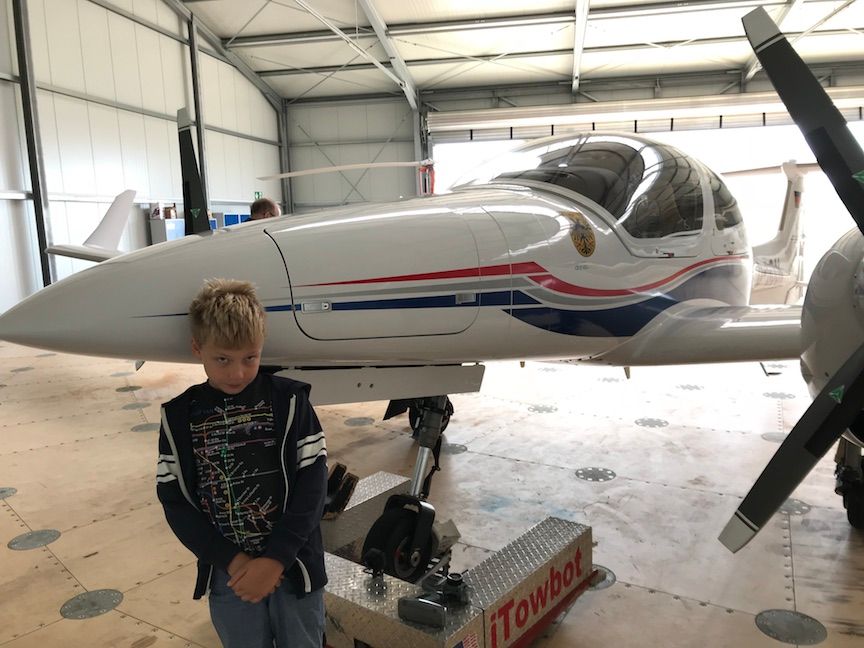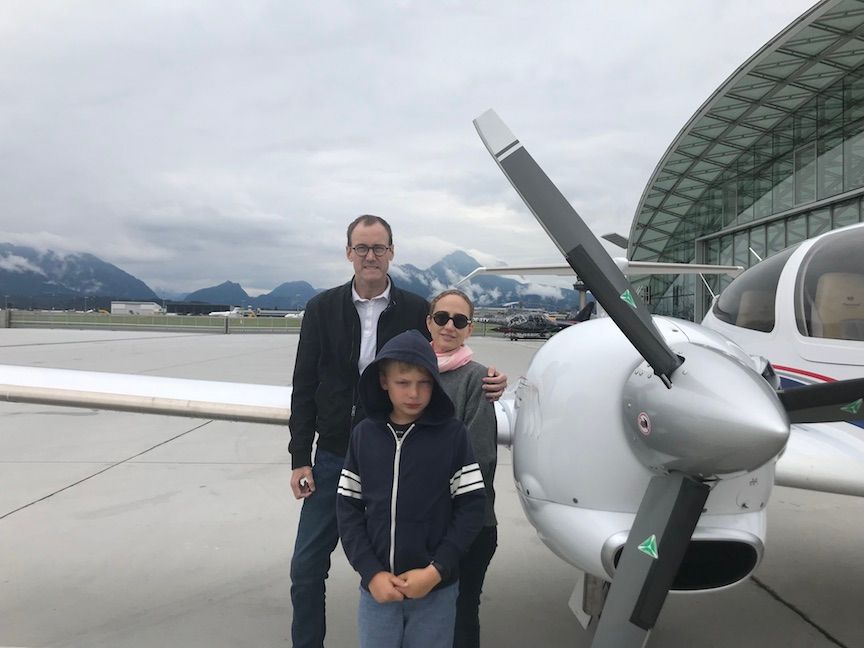Hay Copper - plane crash question
-
@Copper I'm not connected with this flight at all, but have a friend of a friend who knew the folks in it. Anyway, they crashed yesterday in Germany, killing the two pilots. The plane was mainly used for training. See flightradar data below.
Basically looks like they climbed to around 7500k then rapidly descended to 2500k, made a few turns, then crashed.
Thoughts? Is there a pressure risk at 7500 or so? Stall? Obviously all guesses but curious if you had any flight training gut reactions to why they crashed.
Link: https://www.flightradar24.com/data/aircraft/d-fgmt#321ac5aa
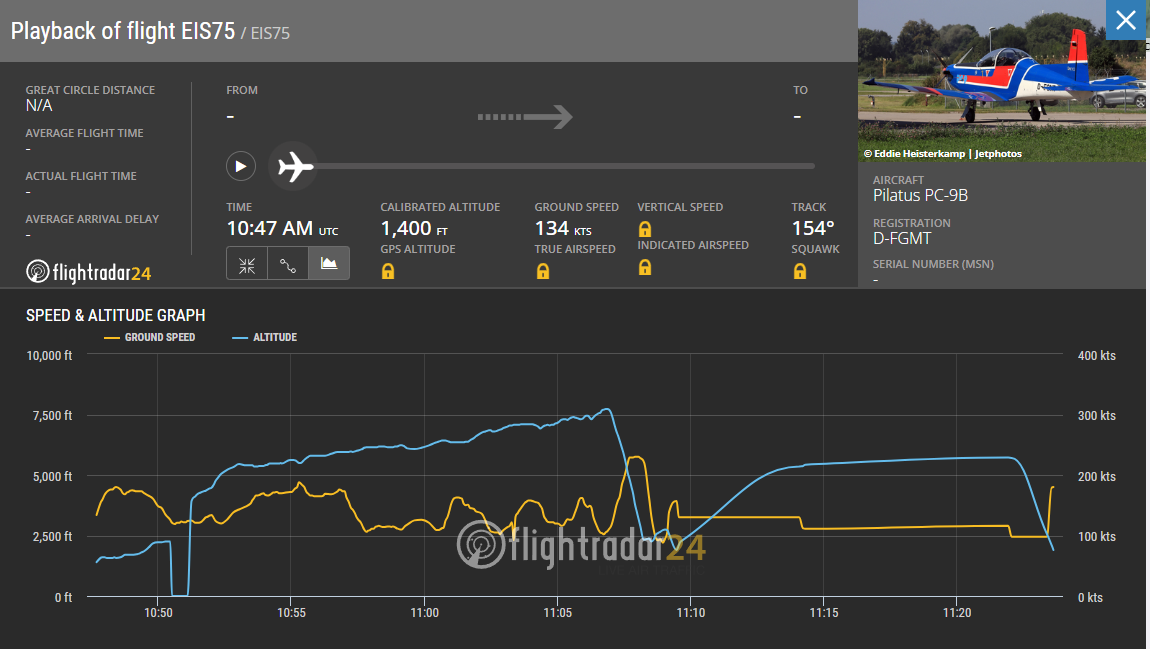
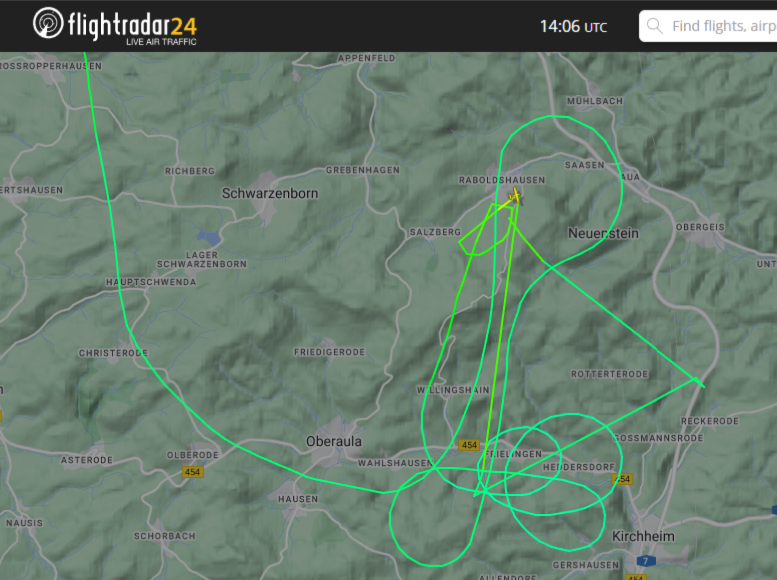
-
My training mostly involved not crashing, and I have not flown this model (Pilatus PC-9B), but I can try a little wild speculation.
The flightpath looks to me like a typical training flightpath. maybe doing some steep turns and other maneuvers.
Toward the end of the flight he gained some altitude and slowed down in increments. He would be doing something like this if he was setting up for some slow flight. This is typically done just above stall speed and with at least a few thousand feet of altitude so you have room to recover if you stall. And you might also be practicing stalls to learn how to recover.
It looks like just before the crash he was going around 100 knots, one source I saw says the stall speed for that plane is around 77 knots. But, of course, you can stall at any speed.
So, if he was practicing slow flight it is possible he got into a spin. A spin occurs when one wing stalls more than the other and drops abruptly. The stalled wing will drop and the plane will flip, ending up in a nose-down attitude. It can be very scary. You go from a nose-up attitude in slow flight to nose-straight down attitude at high speed in just a split second, it is very abrupt. And the plane is spinning around it's horizontal axis - which is now vertical. You go from seeing all-blue (sky) in the windshield to seeing all green (ground).
Flight instructors practice spins, regular students do not. However, students should be taught about spins and how to recover from a spin.
So, just in case you get into a spin, how do you recover? PARE
Power to idle (your nose is straight down and picking up speed fast)
Ailerons neutral to slow the spin
Rudder to stop spin
Elevator to break the stall and get your nose back up -
That flight was similar - lots of steep turns probably. Notice how the ground speed goes up and down - that is the effect of the wind, slow into the wind and then as the plane turns, fast with the wind behind him.
While practicing steep turns he is trying to maintain a level altitude, this is more difficult with wind because you have to keep adjusting because into the wind you will tend to climb, and descend with a tail wind. the blue line shows lots of little ups and downs as he makes the adjustments.
And yes, those rapid descents could be from practicing stalls, to practice stalls you would typically be flying at a slower speed.
-
The fatal flight yesterday 9/20 looks like it took off from Fritzlar or at least that's when the beacon started, since it seemed to have gone from Augsburg to Kiel earlier that morning, so maybe on the way back from Kiel.
BTW, is this your buddy's plane? https://www.flightradar24.com/data/aircraft/d-iapc
-
My training mostly involved not crashing, and I have not flown this model (Pilatus PC-9B), but I can try a little wild speculation.
The flightpath looks to me like a typical training flightpath. maybe doing some steep turns and other maneuvers.
Toward the end of the flight he gained some altitude and slowed down in increments. He would be doing something like this if he was setting up for some slow flight. This is typically done just above stall speed and with at least a few thousand feet of altitude so you have room to recover if you stall. And you might also be practicing stalls to learn how to recover.
It looks like just before the crash he was going around 100 knots, one source I saw says the stall speed for that plane is around 77 knots. But, of course, you can stall at any speed.
So, if he was practicing slow flight it is possible he got into a spin. A spin occurs when one wing stalls more than the other and drops abruptly. The stalled wing will drop and the plane will flip, ending up in a nose-down attitude. It can be very scary. You go from a nose-up attitude in slow flight to nose-straight down attitude at high speed in just a split second, it is very abrupt. And the plane is spinning around it's horizontal axis - which is now vertical. You go from seeing all-blue (sky) in the windshield to seeing all green (ground).
Flight instructors practice spins, regular students do not. However, students should be taught about spins and how to recover from a spin.
So, just in case you get into a spin, how do you recover? PARE
Power to idle (your nose is straight down and picking up speed fast)
Ailerons neutral to slow the spin
Rudder to stop spin
Elevator to break the stall and get your nose back up
